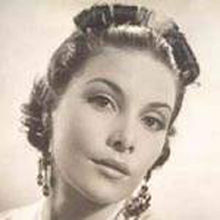Pearl Argyle
| Pearl Argyle | |
|---|---|
 |
|
| Born |
Pearl Wellman 7 November 1910 Johannesburg, South Africa |
| Died | 29 January 1947 (aged 36) New York City, New York, U.S. |
| Nationality | South African |
| Occupation | Ballet dancer and actress |
Pearl Argyle (7 November 1910 – 29 January 1947) was a South African ballet dancer and actress. Remembered today primarily for her extraordinary beauty, she appeared in leading roles with English ballet companies in the 1930s and later performed in stage musicals and in films.
Pearl Wellman, the daughter of Ernest James Wellman and Mary Wellman, was born in Johannesburg, the major city the Transvaal province (now Gauteng) and the center of gold mining in South Africa. Located on the inland plateau known as the Highveld, it is the largest city in the world not situated on a river, lake, or coastline. Nothing is known of what brought the Wellman family to the city or what, if any, dance training young Pearl might have received there. She first enters dance history in the mid-1920s, when she appeared in London and enrolled in ballet classes at the schools of Nikolai Legat, in Colet Gardens, and Dame Marie Rambert, in Notting Hill Gate. There she was known as Pearl Argyle by other students and members of Rambert's Ballet Club, the performing group from which Ballet Rambert was to evolve. Among other club members at the time was the emerging choreographer Frederick Ashton, who would play a significant role in her career on the ballet stage.
At the time that Argyle studied at the Rambert Ballet School, Ashton was the principal dancer of its performing group as well as a budding choreographer. He recalled that she was a shy young woman, subject to blushing when addressed, but was a charming person and a graceful dancer. Like most people, he was immediately struck by her good looks. He likened her to movie actress Greta Garbo and called her "the most beautiful woman of her generation." She soon became his muse, inspiring him to create roles for her in a number of his early ballets. Although she was not a strong technician, Marie Rambert favored her as well, as she was exquisitely sensitive to musical phrasing and had an unusual ability to invest meaning in movement as she danced. She was an important member of Rambert's group of student performers in the late 1920s and of the subsequent Ballet Club and the Camargo Society, from 1930 to 1935. Subsequently, she was a principal dancer with the Vic-Wells Ballet from 1936 to 1938. Among the leading roles she danced during these years were the following.
Argyle had left London in 1933 to go to Paris, where she danced with George Balanchine's short-lived company Les Ballets 1933, led by Tamara Toumanova and Tilly Losch. Back in London in 1934, she rejoined the Ballet Club and created the role of the barmaid in Ninette de Valois's Bar aux Folies-Bergère, inspired by the famous painting by Édouard Manet. (This role was later taken by Elizabeth Schooling, who bore a remarkable resemblance to the girl in Manet's painting.) As the Fille du Bar, Argyle shared the stage with Alicia Markova as the can-can dancer La Goulue and Frederick Ashton as her partner Valentin le désossé. Argyle also created the title role in Andrée Howard's The Mermaid, based on Hans Christian Andersen's story "The Little Mermaid," which was her last new role for the Ballet Club. She also appeared in other ballets in the company's repertory, notably Les Sylphides and The Sleeping Beauty. In the latter, she is said to have been the first British ballerina to perform Marius Petipa's choreography for the grand pas de deux' in act 3.
...
Wikipedia
